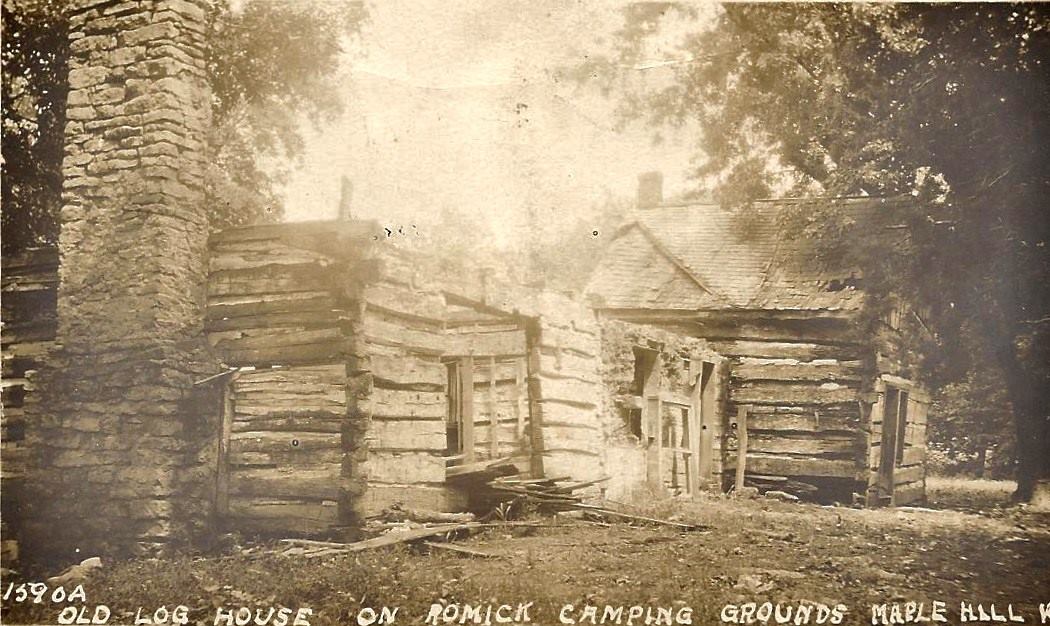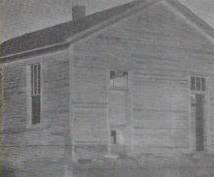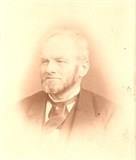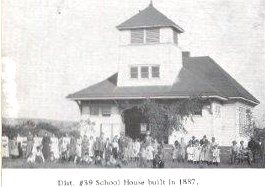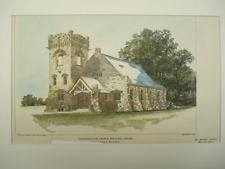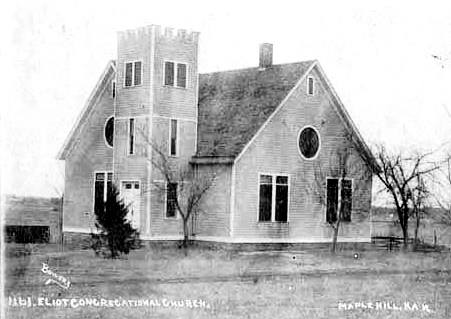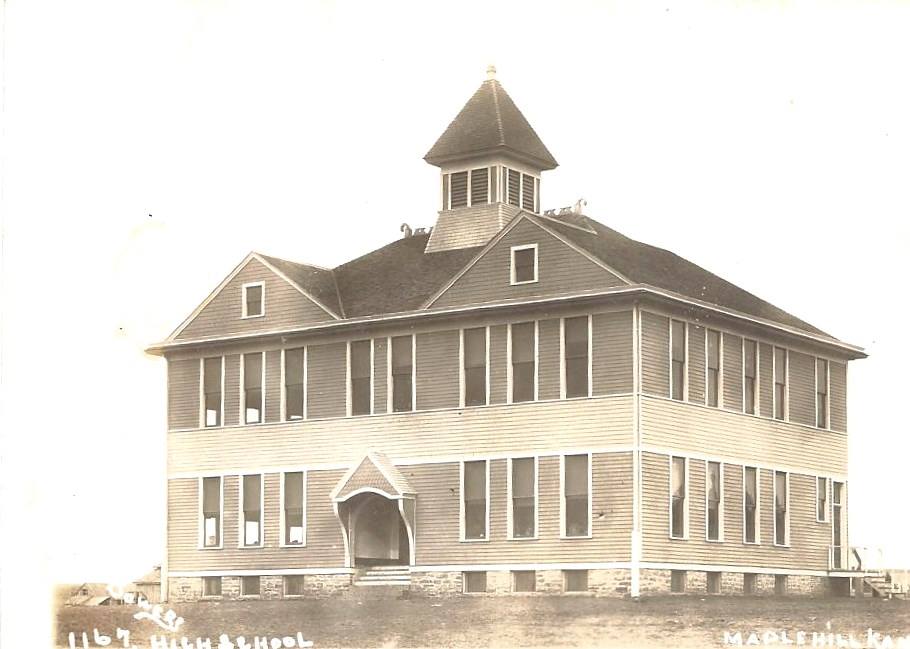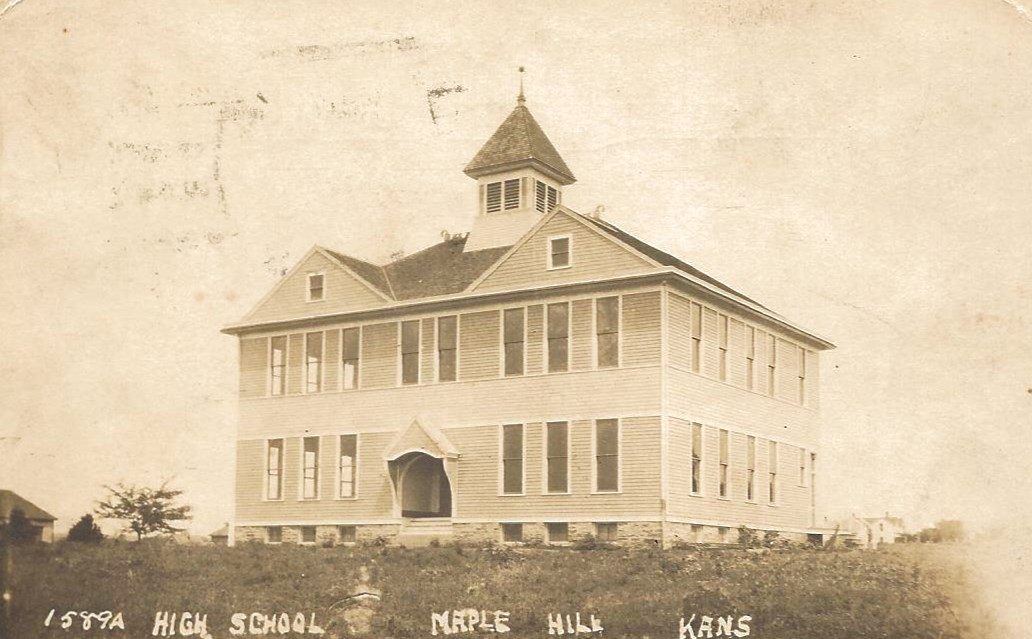A Brief History of Maple Hill Schools
Soon a new Maple Hill page will be established on Facebook. This page will be devoted to those who have attended Maple Hill Grade School or Maple Hill High School. The page was the inspiration of Jackie Gideon Maike, who is a native of Maple Hill and attended Maple Hill Grade School. Jackie asked if I would write a bit about the history of Maple Hill schools, as I know it, and Im pleased to do so. I hope if anyone has questions about some element of Maple Hill History, they will ask and Ill do my best to supply information.
I have in my possession copies of letters and documents from many of the early French and Native American settlers in Maple Hill township. Many of these were obtained on visits to the Citizen Band Potawatomi Archives in Shawnee, Oklahoma and also from descendants of the Bourassa, Beaubien, and Blanchett families.
From those documents, I believe that the first school built in what is today Maple Hill Township (then Newbury Township) was the log school built on the Rueben and Margaret (Bourassa) Haas farmstead along the south banks of Mill Creek near the Highway K-30 crossing of Mill Creek. During most of my lifetime, it was the farmstead occupied by Steele and Ellen Romick. In later years, it was the home of Melvin and Charlotte Deiter.
I believe that this school was in use during the approximately 10 years that the farmstead was occupied by the Bourassa/Haas family and was attended by children who lived in the area, which would have included children from extended Bourassa families, children from the Haas family, children from the Wilmot family, children from the Winkler family, and Darling families.
The older members of the French/Native American families had all received very good educations at either the Carey Mission School in Michigan, The McCoy Potawatomi Mission School in Shawnee County, or at the St. Marys Mission School in St. Marys, Kansas. They were provided the same education as any of the best Eastern schools of the time would have been able to provide, with the addition, generally, of religious education. Some of the more talented members were sent to elite Native American Academies and some of these family members did attend those academies.
Therefore, it was easy to understand, that even though they had migrated to the frontier of the Old West, namely Kansas, they wanted their children to have fine educations (and might I add that the wanted them to be educated in their own school rather than to be sent away to boarding schools.)
One of the letters I have speaks of Margaret (Bourassa) Haas wanting to make certain her six children were taught to read, write and chipher (which was what we would call arithmetic today.) So it was that her husband Rueben, and his brother-in-law Hilary or Henry Frignon, built a log school cabin on the Haas farmstead. In the letter, Margaret Haas says that she taught school for her own children as well as those of neighbors. Margaret (Beaubien) Haas had attended the Carey Mission School in Michigan and was no doubt very proficient in reading, writing and mathematics. Visitors to her Uncle Jude Bourassas home reported that there was a fine library that contained all of the classic books. The home also had the first piano in the area and the Bourassa women could all play and sing. These were not primitive pioneer folk.
Although I have not spent a great deal of time searching county commission or county superintendents records, I have not been able to find any record of the existence of this school other than the mention in these letters.
The first official school district in the area was located two miles to the northeast of the Haas Farmstead, on what is today the headquarters of the Adams Ranch. Wabaunsee County School District #39 was formed by Superintendent of Schools W. F. Cotton on January 1, 1872. The first meeting of patrons and selection of school board was held on January 16, 1872. Again, I have not done the extensive research in County Superintendents records to determine when the school was built and first occupied, or who the first teachers would have been, but a picture of the school does exist and I will use it along with this article.
Maple Hill Township had been officially established and splintered off Newbury Township, in 1872. So any child living in Maple Hill Township would have been eligible to attend the school and their parents, if they owned property, would have been taxed for support of the school.
On August 12, 1872, the following mention of the school appears in Maple Hill News Items: August 12 We are still progressing, slowly but surely, in this part of the valley. Our school is nearly completed except for the seats and they have been shipped. The people of this district have been profusely liberal in voting bonds and taxes for the purpose of getting the institution rolling. Mr. Rueben Haas, our efficient [township] clerk, is entitled to thanks for this quick handling of business. From this, we may assume that the school was able to open for the fall/winter term in September or October 1872.
School terms usually began in late September or early October, to allow children to help their parents with the harvesting of farm crops. The term would then last until the children were again needed to help with spring planting. Generally, children were in school from about 9am until 3pm weekdays from sometime in September until sometime near the end of April or early May. Schools were supervised by an elected school board representative of the area. In general, at that period of time, the number of students attending might number from 10 to 30 and one teacher would be responsible for teaching all grades. The number of grades varied from four to eight. My Grandmother, Mable (Jones) Clark, attended the old Copp School southeast of Paxico, where only six grades were taught when she attended in the 1890s.
Im hopeful that Jackie or some other inquisitive person will go to the Wabaunsee County Historical Society and comb through the Superintendent of Schools records and record as much information as possible. The records would have information about the names of students that attended the names of teachers and the salaries they were paid, the length of terms, and the scores of those taking final examinations—among other notes taken by the Superintendent and Board.
When the Maple Hill Townsite Company was incorporated, and the town of Maple Hill was established in 1887, Mr. George Anderson Fowler was president. Mr. Fowler was highly educated and was the owner of the 12,000 acre Fowler Ranch which included the town site. He knew that education would be important to any of the people who would purchase lots in the new town of Maple Hill, so he donated lots and $2,000 towards building the first school on the townsite. The school was completed and occupied in 1890. Mark Sage, Dover stonemason, laid the stone for the basement and B. H. Anderson was the contractor. It was a large, frame building located exactly where the present Maple Hill Community Congregational Church is now located. The reason we know that, is because the school was too small and was replaced by a new, much larger two-story school on the west side of town. At that time, member of the Maple Hill Congregational Church asked Mr. Fowler if he would donate the first school building to be remodeled into a church.
Mr. Fowler had first hoped that the members of the church might purchase land and build a new stone church on the Main Street of Maple Hill. He offered to have a Kansas City architect design the church and he would give $5,000 towards its construction with the remaining $5,000 to be raised by church members. Mr. Fowler did have plans drawn for the church but the members were not able to raise their $5,000. Mr. Fowler then agreed to their original plan, donated the lots and school building to the church, and Mr. Tom Oliver, a member, was given the contract to completely renovate the building, adding a church tower and bell. The new church was dedicated in 1905.
Meanwhile, the new two-story, frame school building was also under construction on the west side of Maple Hill. Again, Mr. George A. Fowler donated four lots of land for that purpose and also gave $2,500 towards the construction. The rest of the cost (unknown) was covered by bonds voted on by members of the school district. The new building was ready to be occupied in September of 1904, and was in continuous use until 1952. This building had three levels. The lower level was partly beneath ground and had a large coal and furnace room. The remainder of the basement was used as a gathering place for students who brought their lunches and ate and played inside on rainy days. The first level originally had two large rooms on either side of a central hallway. The ceilings were 12 high on the first floor. The main entrance was on the south end of the school, with secondary entrances on the east and west sides of the school. At the north end of the big central hallway was a staircase leading to the second floor.
The second floor had three large rooms. Initially, two of these rooms were used for the upper grades and one was used for a high school. Before the new brick high school was completed, the number of high school students grew to make it necessary for two of the upstairs rooms to be used for the high school with one room used for the 7th and 8th grade. All of the first floor rooms were used for the lower grades. There was no Kindergarten at that time, so the rooms were for 1st and 2nd, 3rd and 4th and 5th and 6th grades.
The number of high school students continued to grow and after much discussion, plans were proposed, bonds were voted up and construction began in 1922. The new brick school building was to be located directly across the street and to the north of the grade school building. It would include a gymnasium with stage to be used for sports events and also school and community programs, six large classrooms, a study hall and library, and a principals office. Plans called for a new efficient coal furnace, and hot water heat in radiators would be utilized.
The following article appeared in Maple Hill News Items, indicating that the gymnasium was put to good use: January 26, 1923 Most high school girls are playing basketball. They are: Edith and Jessie Ribelin, Mildred Romig, Blanche Lett, Louise Oliver, Pearl Wright, Rachel Carothers, Catherine McPherson, Bernice Herron, Margaret Mitchell, Jessie Stewart and Glenola Haines. Bernice Herron would later become the only woman principal of Maple Hill High School.
The old, frame, two-story grade school building was then converted to be used only as an elementary school. The number of elementary students had also grown and there was a need for additional classroom space. The three upstairs rooms were converted into two additional elementary classrooms and a study hall. At various times during the life of the school, some of the large rooms were petitioned into two rooms when numbers were great enough.
I started to school in 1950 and was in the first and second grade primary room. I believe that there were a total of about 100 students attending the eight grades. Charles Mitchell was the janitor at that time. I remember him standing in the hallway with an old round disk, hitting it with a hammer to announce fire drills. We ate our bag lunches in the basement when the weather was extremely bad, but most days even when very cold, we played outdoors on the play equipment which consisted of teeter totters, merry-go-round and swings. The baseball and track and sports fields were across the road south of the school where the Maple Hill City Park is now located.
It was becoming increasingly obvious that the old two-story frame building was not able to fulfill the needs of its teachers and students and discussions concerning a new, modern, brick elementary school and gymnasium began in the early 1950s. The present Maple Hill Grade School was built and occupied in 1953. It contained eight modern classrooms, a principals office, a large gymnasium with a stage at the south end for school plays and musicals. Many community events were also held. The building was also constructed with a modern kitchen and meals were served to school children after the school opened. There were bleachers along the west wall of the gymnasium, which could be folded against the wall or extended into the gym to provide seating for events. There were also a couple hundred folding chairs stored in big carts with rollers under the stage. To many times to count, I have helped pull the carts from beneath the stage and set them up for graduations, musicals, school plays and other community activities.
I believe I will stop at this point. Im very hopeful that others will add pictures and information to Jackie Maikes page dedicated to the Maple Hill Schools.
Photo 1 is a picture postcard of the remains of the first log school house and the log Haas Home. The school house is the structure with the large stone fireplace. It was attached to the Haas House. This photo was taken in about 1910, when the structures were 60 years old and no longer occupied.
Photo #2 is of the original District #39 school house built in 1872. The structure has been extensively remodeled many times, and is the southern most residence on the west side of the road, on the Adams Ranch.
Photo #3 is of Mr. George Anderson Fowler, founder of Maple Hill and owner of the Fowler Meat Packing Company in Kansas City, as well as the 12,000 acre Fowler Ranch which included the townsite.
Photo #4 is of the first Maple Hill Grade School, built and occupied in 1890, which was remodeled and is now the Maple Hill Community Congregational Church. Mr. Fowler had a Kansas City architect design the school, which was the finest in the county when built.
Photo #5 is an architectural rendering of the stone church Mr. Fowler had Kansas City architects design for the 1905 Maple Hill Congregational Church.
Photo #6 is a 1909 photograph of the Maple Hill Community Congregational Church, after it was remodeled from the original school building.
Photo #7 is a 1904 pictorial postcard of the new Maple Hill Grade School.
Photo #8 is a 1916 pictorial postcard of the Maple Hill Grade School.
I’m hopeful others will add good photographs of the new brick high school and the new brick grade school.
